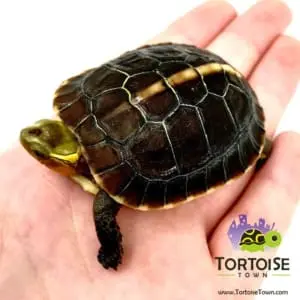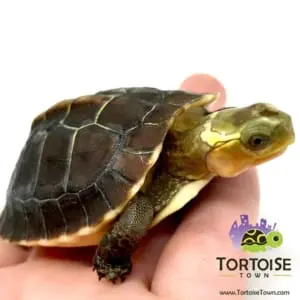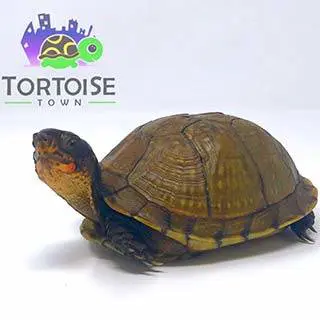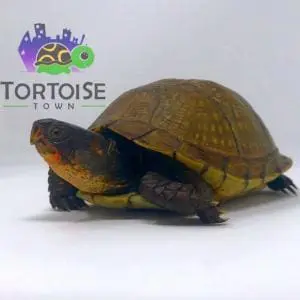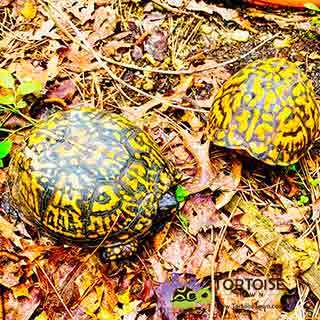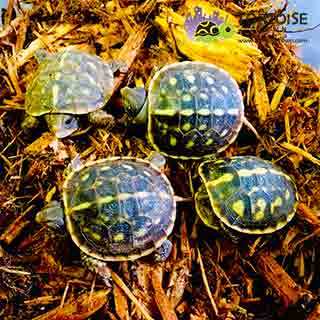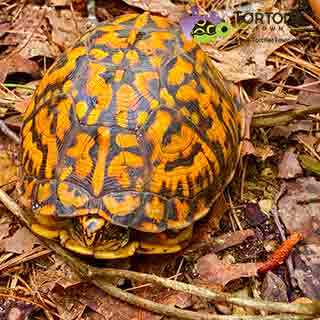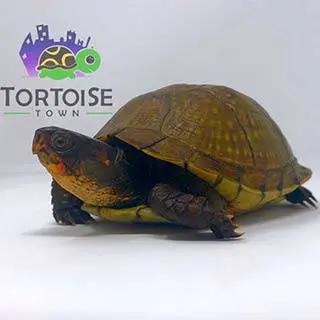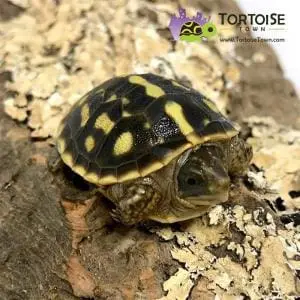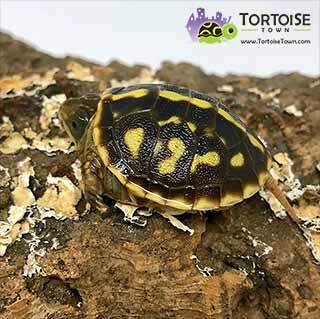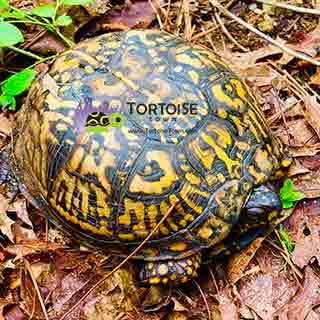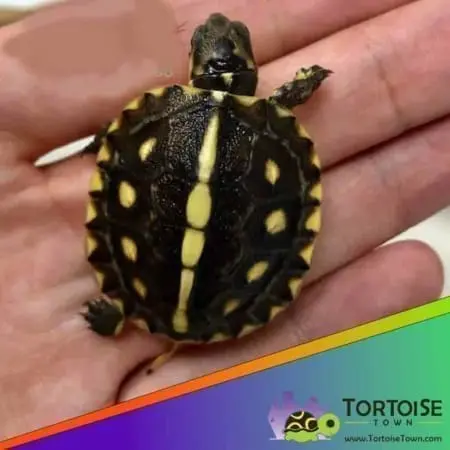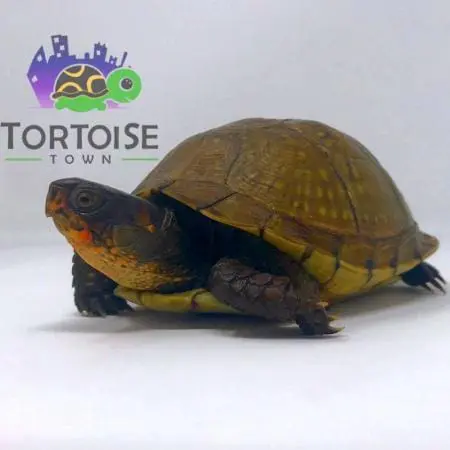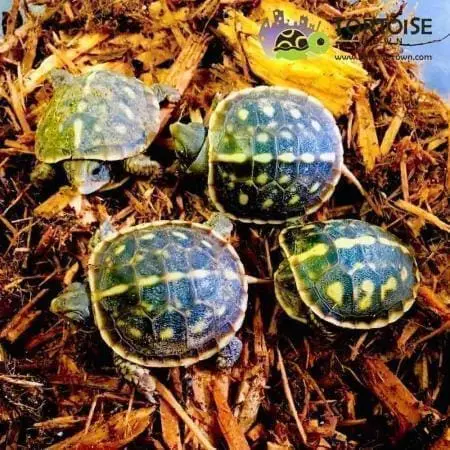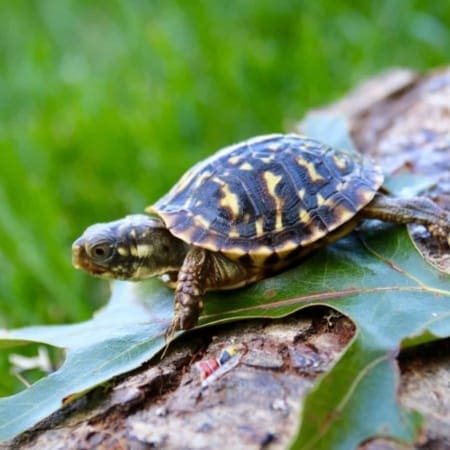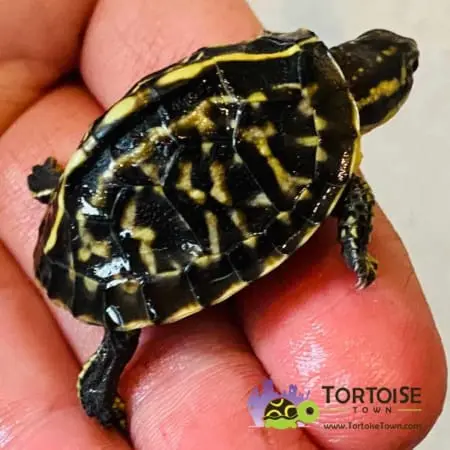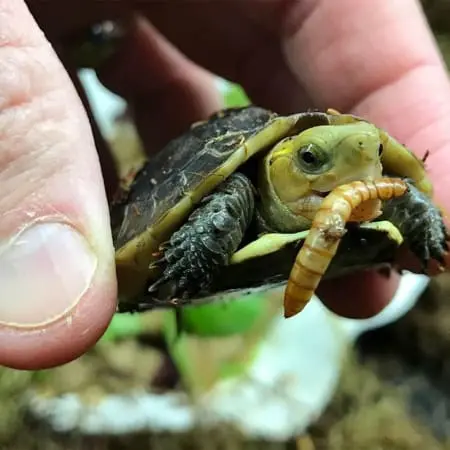Box turtle Habitat
A common overlooked aspect of box turtle care is cage size. In the wild, box turtles occupy relatively arge areas, and providing an enclosure that offers plenty of room is essential to permanently keep them in captivity. Outdoor turtle pens are the best way to accomplish this. They are not difficult to construct and are cheaper than setting up an indoor enclosure. When kept outside, box turtles are exposed to unfiltered sun light, including beneficial UVB rays, which are required for turtles to process calcium from their diet. See Building an Outdoor Box Turtle Pen for more information about constructing one.
Unfortunately, not every environment is suitable to house box turtles outdoors. In areas outside of their natural range, it may be necessary to bring the turtle inside during cold or hot weather, and in some regions, it might not be suitable to keep box turtles outside at all. In these situations, an enclosure indoors will be necessary.
Box turtle habitats continued
Standard glass aquariums don’t work well for housing turtles. Many box turtles, particularly wild-caught animals, pace back and forth against the side of an aquarium trying to walk through the glass, which can be stressful for the turtle. Glass aquariums are also expensive, easily broken, and heavy, and are best passed up for other housing options. Large plastic tubs, such as cement mixing trays, large storage containers, or stock ponds, can be used. Some people have also had success keeping turtles in large indoor pens constructed out of wood, often on top of a table or raised legs. You keep can turtle in a 50 gallon tub that measures 43 inches long by 22 inches wide by 18 inches high (109 cm by 56 cm by 46 cm) during the winter and late fall. It cost less than $15 and offers more space than an average aquarium.
Box turtle substrate
Box turtles do best when kept on a substrate that they can burrow in. In indoor enclosures, coconut husk fiber (bed-a-beast, eco earth, forest bed, etc.) is an ideal substrate. Large bark nuggets and sand can be mixed into the coconut husk fiber. Other possible substrates include cypress mulch, peat moss, or top soil mixed with sand. Gravel, newspaper, sand, reptile carpeting, and indoor/outdoor carpeting make poor substrates and do not work well long-term because turtles can not easily burrow in them, and they do not hold moisture well.
Most captive box turtles are fairly secretive and prefer to remain hidden during the day. To accommodate this, a few hide areas should be provided. These can include pieces of cork bark, commercially available reptile hide spots, driftwood, or cardboard shelters with an entrance hole cut in them.
Box turtle UVB Lighting:
Box turtles that are kept indoors need two types of lighting to stay healthy. They need to be exposed to UVB rays that are produced by a fluorescent or mercury vapor light bulb, and heat that is produced by an incandescent light bulb. Box turtles will need to receive UVB rays in order for their body to process calcium from their diet. Choose a bulb that produces at least “5%” UVB radiation. Place the UVB emitting light bulb over a screen section or open section of the cage because glass and plastic filter out UVB rays. The amount of UVB radiation that is produced by the currently available bulbs slowly decreases over time, so UVB emitting light bulbs need to be replaced every five to seven months regardless of if they burn out or not. Incandescent bulbs can be used to heat the cage to an appropriate temperature. Infra-red incandescent light bulbs can be used to heat the cage at night without disturbing the turtle. All lights should be turned on for 10 to 14 hours a day, with the exception of infra-red light bulbs.
Box Turtle Temperature and Humidity:
The exact temperature that is right for a turtle depends on the species that is kept and where it is from. It’s important to have both a warm and a cool side in the cage so that the box turtle can regulate its body temperature. Box turtles from the northern end of their range may do better when kept cooler than box turtles from the southern part of their range. The warm side should have a warm spot provided by a low wattage light bulb that reaches 80°F-90°F (27°C-32°C). The cooler end of the cage should generally stay between 65°F-75°F (18°C-24°C). If the temperature falls too low for long periods of time some wild-caught box turtles may try to hibernate. If they aren’t conditioned before they start hibernating the turtle will run into health problems.
Eastern box turtles spend much of their time in the leaf litter of forests and woody grasslands. The humidity in the soil and leaf litter is often high. Ornate box turtles are generally found in drier prairies and partial forests where the humidity is lower. Half of a box turtle’s cage can be sprayed with water daily to create a humid area for the turtle to go. The bottom layer of soil substrate should remain moist or damp on one half of the cage as well. Box turtles that are kept in dry conditions often remain burrowed under the substrate for extended periods of time in an attempt to stay in a humid area.
Box turtle Water:
A source of clean water should always be available to box turtles. Most bathe in it a couple times a day or more and it can become dirty quickly. The water dish should be changed at least once a day, more often if needed. Box turtles are also not the best swimmers, so the water dish should be fairly shallow. It should be large enough for the entire turtle to fit into it. To ensure that captive box turtles stay hydrated it can be helpful to soak them in lukewarm water for up to an hour once a week.
Explore our box turtle care section and find information on the following:
- Box turtle care
- Eastern box turtle for sale
- Box turtle Diet
- Box Turtle water
- 3 Toed box turtle for sale
- box turtle pictures
- baby box turtles for sale
- Box turtle UVB Lighting
- Box Turtle Habitat
- Baby Ornate box turtle for sale
- Box Turtle temperature
- Box turtle lifespan
- Size of box turtle
- Box Turtle Humidity
- Box turtle substrate
- Chinese box turtle
Largest selection of box turtle for sale in the USA!
At TortoiseTown, we are proud to have the largest selection of box turtles for sale online anywhere. We have everything from the common box turtle for sale, including the eastern box turtle, baby eastern box turtles for sale, adult eastern box turtle for sale, 3 toed box turtle, ornate box turtles including baby ornate box turtle for sale. Baby ornate box turtles are very similar to desert box turtles.
We also have florida box turtles, gulf coast box turtles, chinese box turtle for sale and more. While the baby chinese box turtle is probably the most expensive, it is also the most rare. All of our baby box turtles for sale are 100% captive bred and are raised inside our baby turtle adoption facility. With a biologist on site, you can expect a health new pet box turtle for sale from tortoise town, shipped year round!
Remember when searching for any tortoises for sale, including a new baby tortoise for sale, tortoise town is your source for the best tortoise for sale , baby tortoises for sale , baby turtles for sale, and adult turtles for sale of any turtle store anywhere including a huge aquatic turtles for sale section. If you are interested in tortoise care, please visit our care section.
